Effect of Guar Gum Content on the Mechanical Properties of Laterite Soil for Subgrade Soil Application
Abstract
:1. Introduction
2. Materials and Methods
2.1. Laterite Soil
XRD Analysis of Laterite Soil
2.2. Guar Gum
XRD Analysis of Guar Gum
2.3. Sample Preparation
3. Results and Discussions
3.1. Atterberg’s Limit
3.2. Modified Proctor Test
3.3. Direct Shear Test
3.4. CBR Test
3.5. Microstructural Study
3.5.1. XRD Analysis of LS + 2% GG
3.5.2. SEM (LS + 2% GG)
4. Pavement Design and Cost Analysis
4.1. Guar Gum Used in Solely Subgrade Soil vs. in Subgrade Soil with Embankment Soil (T8 Category)
4.2. Guar Gum Used in Solely Subgrade Soil vs. in Subgrade Soil with Embankment Soil (T9 Category)
5. Conclusions
- When the soil was treated with guar gum, increases of 36.03% in the liquid limit, 49.21% in the plastic limit, and 76.42% in the shrinkage rate were found.
- Guar gum increased the maximum dry density and decreased the optimum moisture content. The addition of 2% guar gum increased the dry unit weight of laterite soil from 1.42 to 1.81 gm/cc, but further additions lowered it.
- The unsoaked CBR value of soil containing 2% guar gum indicated an increase of 148%, while the soaked CBR value increased by 192.36%; further additions of guar gum did not affect the CBR values.
- The cohesiveness of the soil admixed with 2% guar gum increased by 93.33%, and the angle of internal friction increased by 31.52%; however, no further rise in its cohesion or angle of internal friction was found. Soils treated with guar gum improved in their shear strength.
- Guar gum is a promising substance for soil enhancement since it is more sustainable and environmentally friendly than other additives. However, it is currently not cost-effective. As increased production of guar gum will lower its prices, using biopolymers as soil improvement materials may become economically viable due to this research.
- Considering both the cost factor and the substantial enhancements observed in the soil’s mechanical properties, this study recommends guar gum as a well-suited material for integration into subgrade laterite soil. Using guar gum in T8 subgrade soil necessitated a pavement depth of 1395 mm, entailing a cost of INR 3.83 Crores, 1.52 times higher than that for laterite soil. For T9 subgrade soil, the required depth was 1495 mm, with expenses amounting to INR 4.42 Crores, representing a 1.72-times increase compared to that of laterite soil.
Author Contributions
Funding
Institutional Review Board Statement
Data Availability Statement
Conflicts of Interest
References
- Ayadat, T.; Hanna, A.M.; Hamitouche, A. Soil improvement by internally reinforced stone columns. Proc. Inst. Civ. Eng. Ground Improv. 2008, 161, 55–63. [Google Scholar] [CrossRef]
- Achampong, F.; Anum, R.A.; Boadu, F.; Djangmah, N.B.; Chegbele, L.P. Chemical Stabilization of Laterite Soils for Road Construction. Case Study: The Laterite Soils at Legion. Int. J. Sci. Eng. Res. 2013, 4, 2019–2041. [Google Scholar]
- Latifi, N.; Horpibulsuk, S.; Meehan, C.L.; Majid, M.Z.A.; Rashid, A.S.A. Xanthan gum biopolymer: An eco-friendly additive for stabilization of tropical organic peat. Environ. Earth Sci. 2016, 75, 2–11. [Google Scholar] [CrossRef]
- Phummiphan, I.; Horpibulsuk, S.; Rachan, R.; Arulrajah, A.; Shen, S.L.; Chindaprasirt, P. High calcium fly ash geopolymer stabilized lateritic soil and granulated blast furnace slag blends as a pavement base material. J. Hazard. Mater. 2018, 341, 257–267. [Google Scholar] [CrossRef]
- Marto, A.; Boss, S.; Makhtar, A.M.; Latifi, N. Strength characteristic of brown kaolin treated with liquid polymer additives. J. Teknol. 2015, 76, 89–94. [Google Scholar] [CrossRef]
- Joel, M.; Agbede, I.O. Mechanical-Cement Stabilization of Laterite for Use as Flexible Pavement Material. J. Mater. Civ. Eng. 2011, 23, 146–152. [Google Scholar] [CrossRef]
- Saing, Z.; Samang, L.; Harianto, T.; Patanduk, J. Mechanical characteristic of ferro laterite soil with cement stabilization as a subgrade material. Int. J. Civ. Eng. Technol. 2017, 8, 609–616. [Google Scholar]
- Marathe, S.; Kumar, A.; Avinash. Stabilization of Lateritic Soil Subgrade Using Cement, Coconut Coir and Aggregates. Int. J. Innov. Res. Sci. Eng. Technol. 2015, 4, 11907–11914. [Google Scholar]
- Todingrara’, Y.T.; Tjaronge, M.W.; Harianto, T.; Ramli, M. Performance of Laterite Soil Stabilized with Lime and Cement as a Road Foundation. Int. J. Appl. Eng. Res. 2017, 12, 4699–4707. [Google Scholar]
- Amadi, A. Evaluation of changes in index properties of lateritic soil stabilized with fly ash. Leonardo Electron. J. Pract. Technol. 2010, 9, 69–78. [Google Scholar]
- Osinubi, K.J.; Bafyau, V.; Eberemu, A.O. Bagasse ash stabilization of lateritic soil. In Appropriate Technologies for Environmental Protection in the Developing World; Springer: Dordrecht, The Netherlands, 2009; pp. 271–280. [Google Scholar] [CrossRef]
- Eberemu, A.O. Consolidation Properties of Compacted Lateritic Soil Treated with Rice Husk Ash. Geomaterials 2011, 1, 70–78. [Google Scholar] [CrossRef]
- Saing, Z.; Djainal, H. Effect of Lime Stabilization on Vertical Deformation of Laterite Halmahera Soil. IOP Conf. Ser. Earth Environ. Sci. 2018, 140, 012071. [Google Scholar] [CrossRef]
- Latifi, N.; Marto, A.; Eisazadeh, A. Structural Characteristics of Laterite Soil Treated by SH-85 and TX-85 (Non-Traditional) Stabilizers. Electron. J. Geotech. Eng. 2013, 18, 1707–1718. [Google Scholar]
- Gordan, B.; Adnan, A. Strength Performance Based on Flexibility from Laterite Soil Using Tire Powder and Micro Silica. J. Mater. 2015, 2015, 830903. [Google Scholar] [CrossRef]
- Sadeeq, J.A.; Salahudeen, A.B. Groundnut Shell Ash Modification of Lateritic Soil. 2017. Available online: https://www.researchgate.net/publication/321875515_GROUNDNUT_SHELL_ASH_MODIFICATION_OF_LATERITIC_SOIL (accessed on 26 July 2024).
- Sharma, P.D.V. To Study the Effect of Calcium Chloride on Laterite Soil. Int. J. Res. Appl. Sci. Eng. Technol. 2018, 6, 1727–1734. [Google Scholar] [CrossRef]
- Adedokun, S.I.; Oluremi, J.R. A Review of the Stabilization of Lateritic Soils With Some Agricultural Waste Products. Ann. Fac. Eng. Hunedoara 2019, 17, 63–74. [Google Scholar]
- Eze-Uzomaka, O.J.; Agbo, D. Suitability of quarry dust as improvement to cement stabilized-laterite for road bases. Electron. J. Geotech. Eng. 2010, 15, 1053–1066. [Google Scholar]
- Tuan Ismail, T.N.H.; Mohd Yusoff, S.A.N.; Bakar, I.; Wijeyesekera, D.C.; Zainorabidin, A.; Azmi, M.; Ramli, M.H.; Siang, A.J.L.M. Engineering behaviour of stabilized laterite and kaolin using lignin. MATEC Web Conf. 2018, 250, 01008. [Google Scholar] [CrossRef]
- Dhawale, A.W.; Banne, S.P. Laterite soil stabilization using cellulose biopolymer. Mater. Today Proc. 2023. [Google Scholar] [CrossRef]
- Rashid, A.S.A.; Tabatabaei, S.A.; Horpibulsuk, S.; Mohd Yunus, N.Z.; Hassan, W.H.W. Shear Strength Improvement of Lateritic Soil Stabilized by Biopolymer Based Stabilizer. Geotech. Geol. Eng. 2019, 37, 5533–5541. [Google Scholar] [CrossRef]
- Banne, S.; Dhawale, A.; Kulkarni, S.; Muthekar, V.; Onyelowe, K. Enhancement of properties of laterite soil used as subgrade using xanthan gum biopolymer. Multiscale Multidiscip. Model. Exp. Des. 2023, 6, 333–345. [Google Scholar] [CrossRef]
- Banne, S.P.; Dhawale, A.W.; Patil, R.B.; Girase, M.; Kulkarni, C.; Dake, M.; Khan, S. Slope Stability Analysis of Xanthan Gum Biopolymer Treated Laterite Soil Using Plaxis Limit Equilibrium Method (PLAXIS LE). KSCE J. Civ. Eng. 2024, 28, 1205–1216. [Google Scholar] [CrossRef]
- Sujatha, E.R.; Saisree, S. Geotechnical behaviour of guar gum-treated soil. Soils Found. 2019, 59, 2155–2166. [Google Scholar] [CrossRef]
- Ayeldeen, M.; Negm, A.; El-Sawwaf, M.; Kitazume, M. Enhancing mechanical behaviors of collapsible soil using two biopolymers. J. Rock Mech. Geotech. Eng. 2017, 9, 329–339. [Google Scholar] [CrossRef]
- Chen, R.; Zhang, L.; Budhu, M. Biopolymer Stabilization of Mine Tailings. J. Geotech. Geoenvironmental Eng. 2013, 139, 1802–1807. [Google Scholar] [CrossRef]
- Bozyigit, I.; Javadi, A.; Altun, S. Strength properties of xanthan gum and guar gum treated kaolin at different water contents. J. Rock Mech. Geotech. Eng. 2021, 13, 1160–1172. [Google Scholar] [CrossRef]
- Ayeldeen, M.K.; Negm, A.M.; El Sawwaf, M.A. Evaluating the physical characteristics of biopolymer/soil mixtures. Arab. J. Geosci. 2016, 9, 371. [Google Scholar] [CrossRef]
- Acharya, R.; Pedarla, A.; Bheemasetti, T.V.; Puppala, A.J. Assessment of Guar Gum Biopolymer Treatment toward Mitigation of Desiccation Cracking on Slopes Built with Expansive Soils. Transp. Res. Rec. 2017, 2657, 78–88. [Google Scholar] [CrossRef]
- Dehghan, H.; Tabarsa, A.; Latifi, N.; Bagheri, Y. Use of xanthan and guar gums in soil strengthening. Clean Technol. Environ. Policy 2019, 21, 155–165. [Google Scholar] [CrossRef]
- Latifi, N.; Horpibulsuk, S.; Meehan, C.L.; Abd Majid, M.Z.; Tahir, M.M.; Mohamad, E.T. Improvement of Problematic Soils with Biopolymer—An Environmentally Friendly Soil Stabilizer. J. Mater. Civ. Eng. 2017, 29, 04016204. [Google Scholar] [CrossRef]
- Majumder, M.; Venkatraman, S. Utilization of the Lime as Subgrade Stabilizer in the Pavement Construction. Arab. J. Sci. Eng. 2022, 47, 4929–4942. [Google Scholar] [CrossRef]
- Mosa, A.M.; Taher, A.H.; Al-Jaberi, L.A. Improvement of poor subgrade soils using cement kiln dust. Case Stud. Constr. Mater. 2017, 7, 138–143. [Google Scholar] [CrossRef]
- Abukhettala, M.; Fall, M. Geotechnical characterization of plastic waste materials in pavement subgrade applications. Transp. Geotech. 2021, 27, 100472. [Google Scholar] [CrossRef]
- Ayininuola, G.M.; Adekitan, O.A. Compaction characteristics of lateritic soils stabilised with cement-calcined clay blends. Epa. J. Silic. Based Compos. Mater. 2017, 69, 34–39. [Google Scholar] [CrossRef]
- Sabat, A.K.; Pradhan, A. Fiber reinforced-fly ash stabilized expansive soil mixes as subgrade material in flexible pavement. Electron. J. Geotech. Eng. 2014, 19, 5757–5770. [Google Scholar]
- Abhijith, R.P. Effect of Natural Coir fibres on CBR Strength of Soil. Int. J. Sci. Res. Publ. 2015, 5, 5–8. [Google Scholar]
- Shahiri, J.; Ghasemi, M. Utilization of Soil Stabilization with Cement and Copper Slag as Subgrade Materials in Road Embankment Construction. Int. J. Transp. Eng. 2017, 5, 45–58. [Google Scholar]
- Rahman, I.U.; Raheel, M.; Wajahat Ali Khawaja, M.; Khan, R.; Li, J.; Khan, A.; Khan, M.T. Characterization of engineering properties of weak subgrade soils with different pozzolanic & cementitious additives. Case Stud. Constr. Mater. 2021, 15, e00676. [Google Scholar] [CrossRef]
- Chen, L.; Lin, D.F. Stabilization treatment of soft subgrade soil by sewage sludge ash and cement. J. Hazard. Mater. 2009, 162, 321–327. [Google Scholar] [CrossRef]
- SP 36-Part1-1987; Compendium of Indian Standards on Soil Engineering. Bureau of Indian Standards: New Delhi, India, 1987.
- Mudgil, D.; Barak, S.; Khatkar, B.S. Guar gum: Processing, properties and food applications—A Review. J. Food Sci. Technol. 2014, 51, 409–418. [Google Scholar] [CrossRef]
- IRC-SP-72-2015; Guidelines for the Design of Flexible Pavements for Low Volume Rural Roads. India Offset Press: Delhi, India, 2015.
- IRC-37-2012; Tentative Guidelines for the Design of Flexible Pavements. Indian Roads Congress: New Delhi, India, 2012.
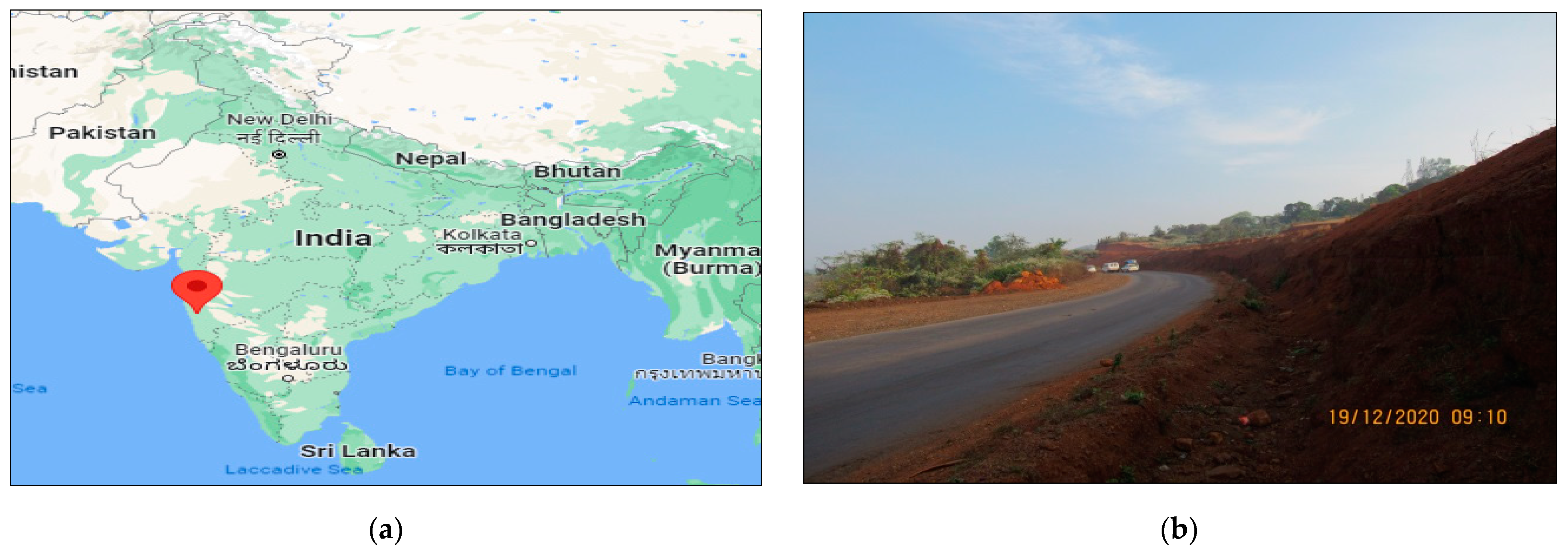

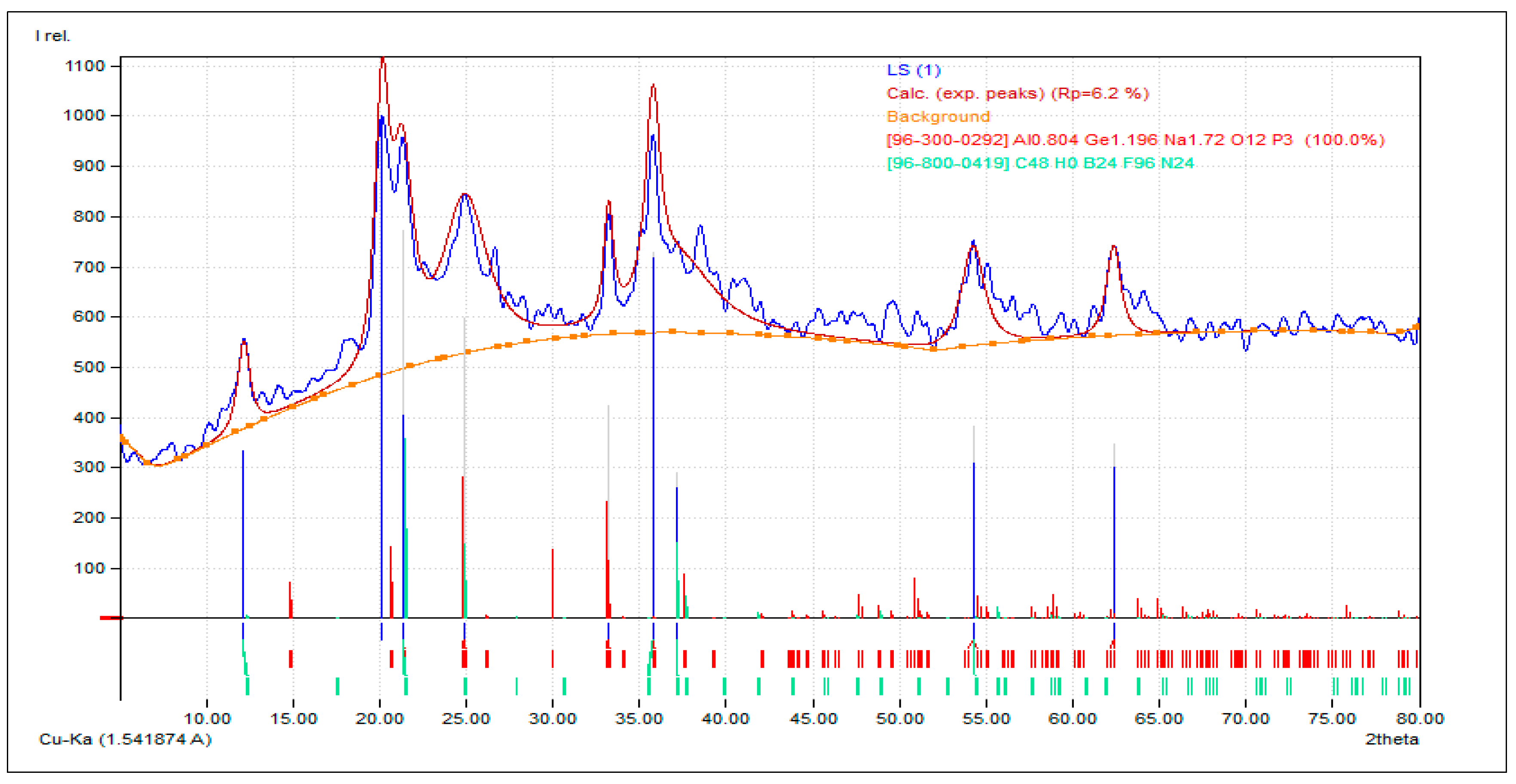
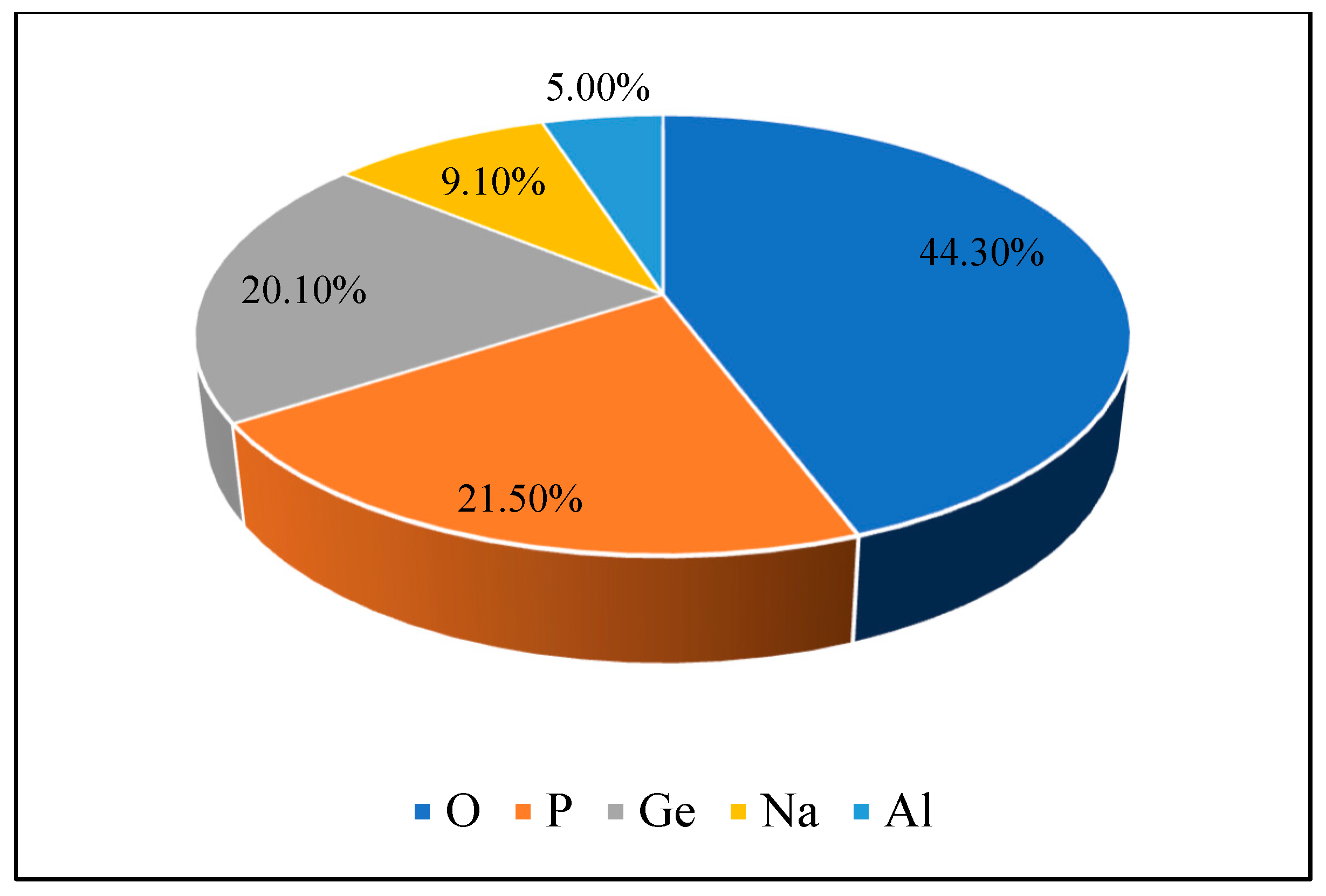

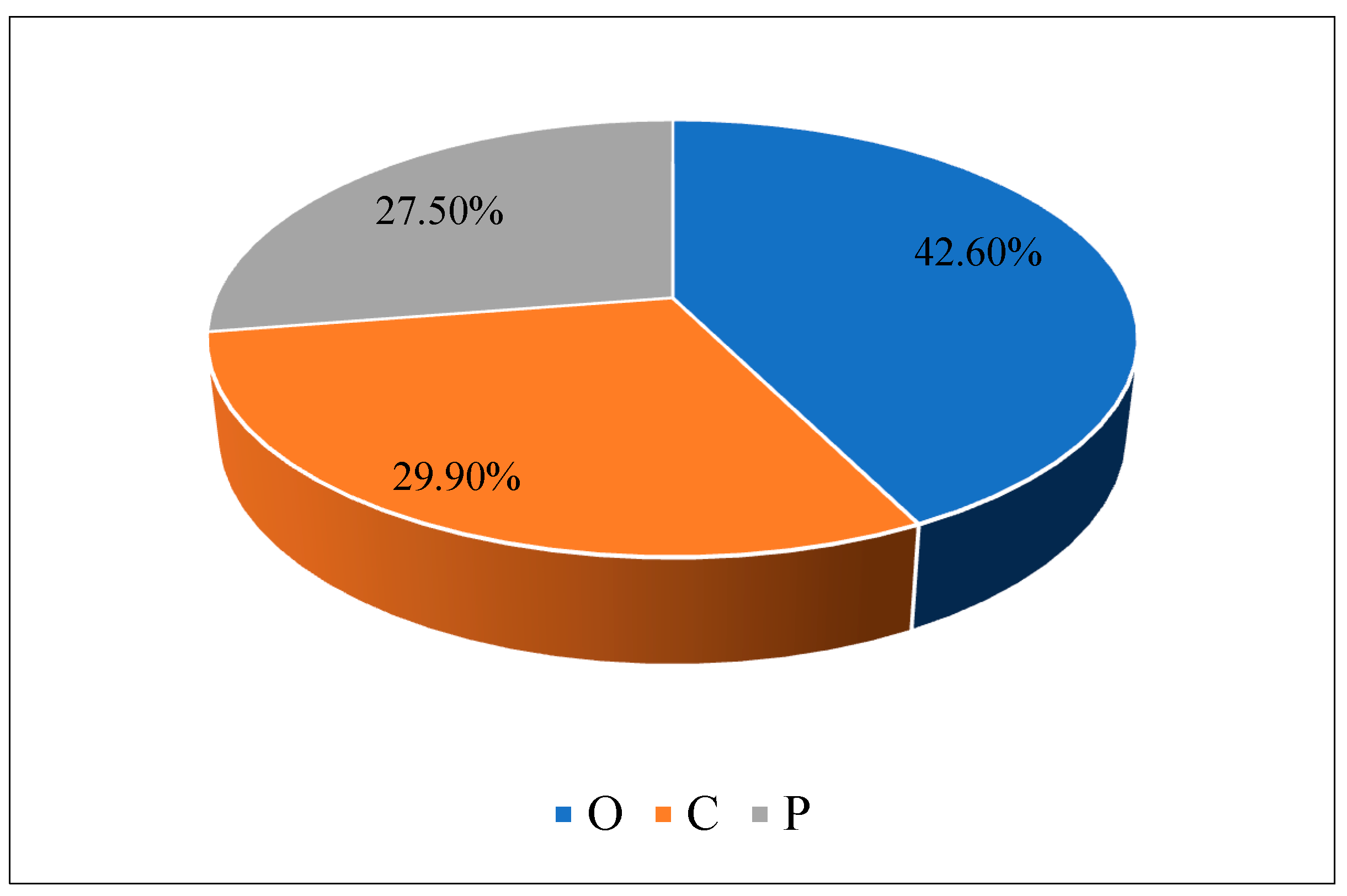




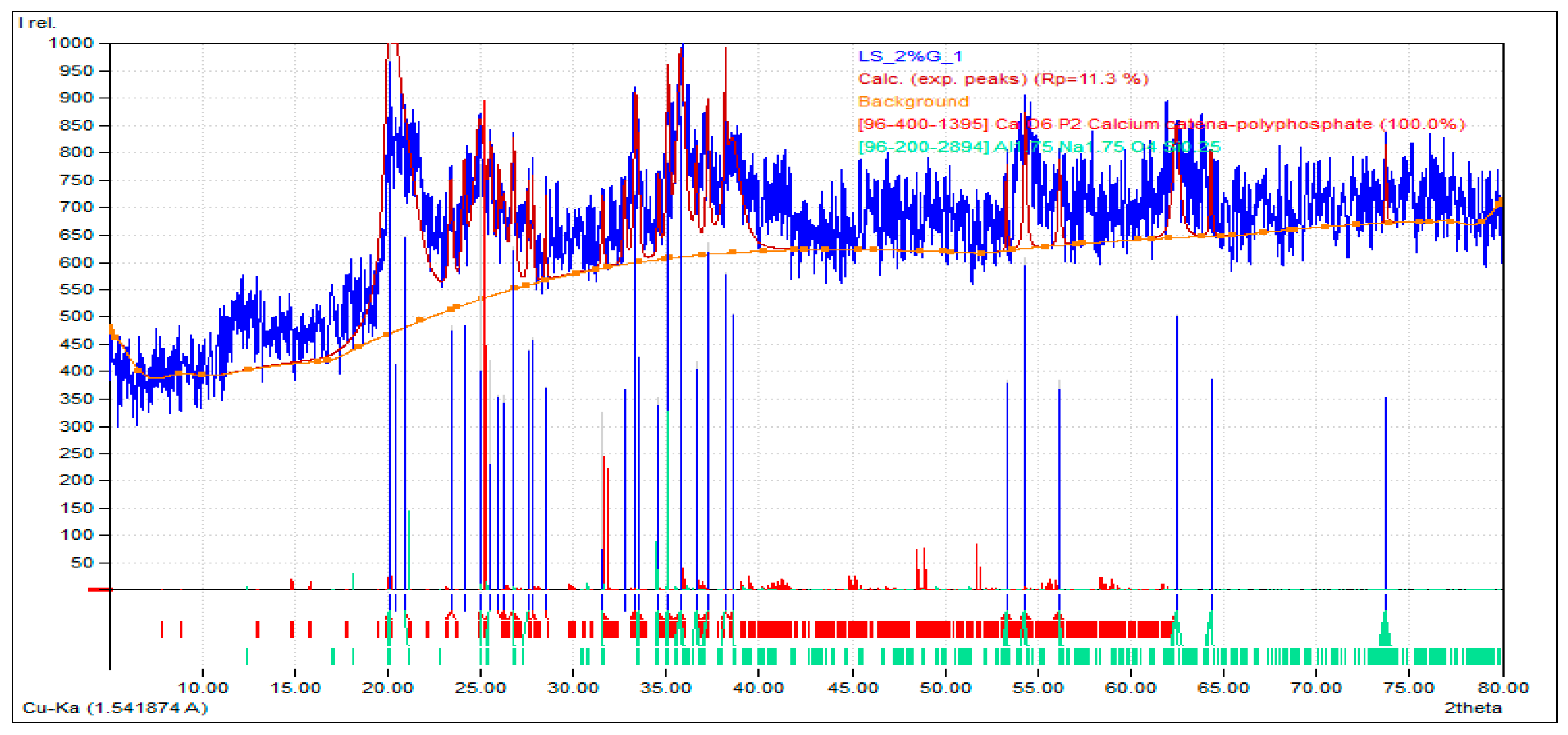

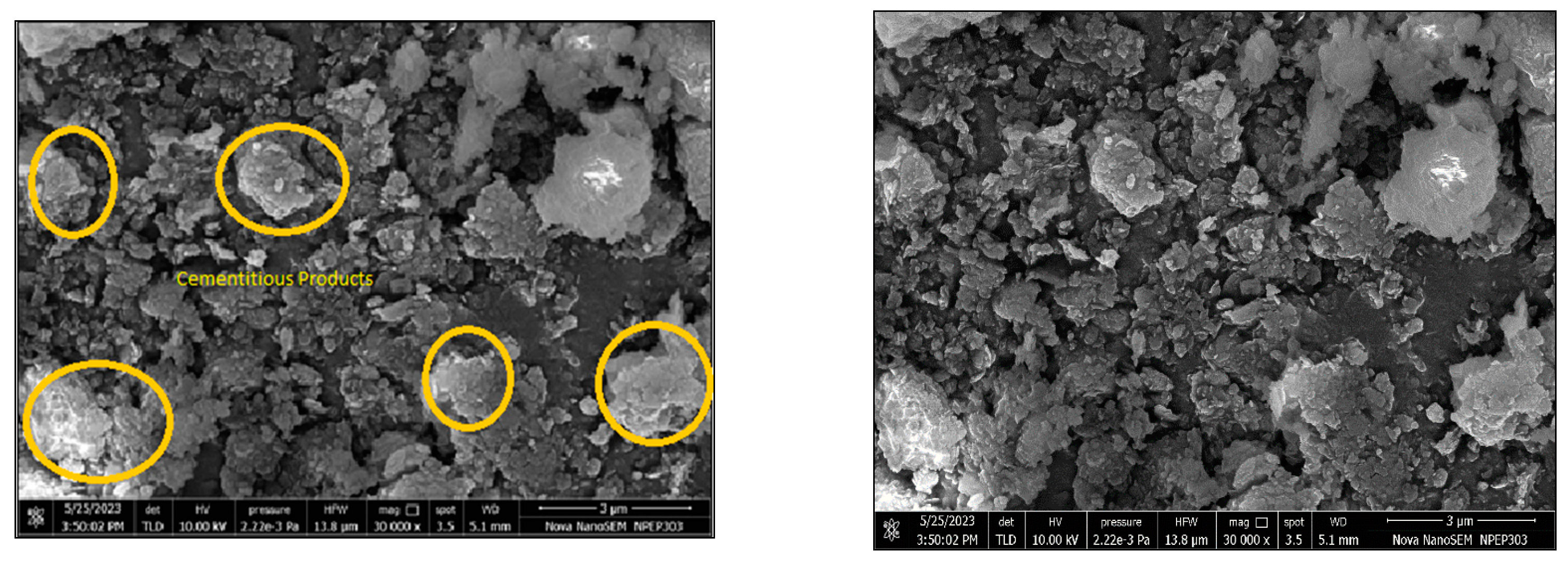
| Sr. No. | Properties | Value | Reference |
|---|---|---|---|
| 1 | Specific Gravity (G) | 2.52–2.67 | IS 2720 (Part-3) 1980 [42] |
| 2 | Distribution of Particle Size | IS: 2720 (Part-4): 1985 [42] | |
| 29–32 | ||
| 19–25 | ||
| 52–58 | ||
| 3 | Consistency Limits | IS 2720 (Part-5) 1985 [42] | |
| LL (%) | 58–64 | ||
| PL (%) | 34–39 | ||
| PI (%) | 24–25 | ||
| SL (%) | 17–21 | ||
| 4 | Soil Classification | MH | |
| 5 | Modified Proctor Test | IS 2720 (Part-8) 1980 [42] | |
| 1.40–1.43 | ||
| 13.02–16 | ||
| 6 | CBR Value (%) | IS 2720 (Part-16) 1987 [42] | |
| Soaked | 1.34–1.44 | ||
| Unsoaked | 2.3–2.5 | ||
| 7 | Direct Shear Test | IS 2720 (Part-15) 1986 [42] | |
| Cohesion (kg/cm2) | 0.13–0.15 | ||
| Angle of Internal Friction (Degree) | 13.09–15.22 | ||
| 8 | Coefficient of Permeability (cm/sec) | 2.75 × 10−4 | IS 2720 (Part-17) 1986 [42] |
| Geotechnical Property | Type A Soil | Type B Soil | Type C Soil | Type D Soil | Mean | ||||||||||
|---|---|---|---|---|---|---|---|---|---|---|---|---|---|---|---|
| Guar Gum % | 1 | 2 | 3 | 1 | 2 | 3 | 1 | 2 | 3 | 1 | 2 | 3 | 1 | 2 | 3 |
| Specific Gravity | 2.73 | 2.80 | 2.84 | 2.65 | 2.74 | 2.81 | 2.68 | 2.76 | 2.84 | 2.72 | 2.78 | 2.86 | 2.69 | 2.77 | 2.83 |
| Liquid Limit % | 69 | 77 | 82.5 | 67 | 74 | 79 | 68 | 78 | 83 | 67 | 76 | 82 | 67.75 | 76.25 | 81.62 |
| Plastic Limit % | 40.83 | 48.97 | 56.80 | 41.25 | 46.55 | 54.35 | 40.25 | 47.65 | 53.60 | 42.10 | 45.75 | 56.10 | 42.02 | 47.23 | 55.21 |
| Plasticity Index % | 28.17 | 28.03 | 26.5 | 25.75 | 27.45 | 24.65 | 27.75 | 30.35 | 29.4 | 24.9 | 30.25 | 25.9 | 25.73 | 29.02 | 26.41 |
| Shrinkage Limit % | 26.81 | 29.41 | 32.20 | 25.33 | 31.25 | 34.55 | 28.30 | 32.40 | 33.10 | 27.35 | 30.45 | 34.25 | 26.95 | 30.87 | 33.52 |
| MDD (kN/m3) | 1.72 | 1.82 | 1.75 | 1.68 | 1.78 | 1.65 | 1.70 | 1.82 | 1.74 | 1.78 | 1.82 | 1.70 | 1.72 | 1.81 | 1.71 |
| OMC % | 16.25 | 16.75 | 16.10 | 15.75 | 16.25 | 15.25 | 16.75 | 17.25 | 16.5 | 17.5 | 18.25 | 17.40 | 16.56 | 17.12 | 16.31 |
| Soil Description | Type A Soil | Type B Soil | Type C Soil | Type D Soil | ||||
|---|---|---|---|---|---|---|---|---|
| C (kg/cm2) | Φ (Degree) | C (kg/cm2) | Φ (Degree) | C (kg/cm2) | Φ (Degree) | C (kg/cm2) | Φ (Degree) | |
| Laterite Soil (LS + 0% GG) | 0.15 | 22.81 | 0.15 | 22.81 | 0.15 | 22.81 | 0.15 | 22.81 |
| Lateritic Soil + 1% Guar Gum (LS + 1% GG) | 0.24 | 26.35 | 0.27 | 28.23 | 0.33 | 29.46 | 0.31 | 29.24 |
| Lateritic Soil + 2% Guar Gum (LS + 2% GG) | 0.29 | 25.71 | 0.31 | 29.29 | 0.35 | 31.04 | 0.33 | 30.41 |
| Lateritic Soil + 3% Guar Gum (LS + 3% GG) | 0.27 | 25.96 | 0.25 | 31.92 | 0.33 | 34.87 | 0.32 | 31.29 |
| Case 1: 2% Guar Gum in Only Subgrade Soil | ||||||||
|---|---|---|---|---|---|---|---|---|
| Length of road (m) | 1000 | MDD (kg/m3) | 1820 | |||||
| Carriageway width (m) | 14 | Biopolymer | Guar gum | |||||
| Effective CBR (%) | 2.90 | Layer to be used | Subgrade | |||||
| Subgrade class | S2 | Dosage | 2% | |||||
| Layer | Thickness (mm) | Top width (m) | Bottom width (m) | Length (m) | Qty. (cum.) | Qty. (kg) | Rate (INR) | Amount (INR) |
| OGPC | 20 | 14 | 14 | 1000 | 280 | 0 | 267 | 74,760 |
| WBM Grade-3 | 75 | 14 | 14 | 1000 | 1050 | 0 | 2180 | 2,289,000 |
| WBM (CBR > 100%) | 150 | 14 | 14 | 1000 | 2100 | 0 | 2180 | 4,578,000 |
| Granular sub-base (CBR > 20%) | 150 | 14.98 | 15.58 | 1000 | 2292 | 0 | 2039 | 4,673,388 |
| Modified subgrade | 200 | 15.58 | 16.38 | 1000 | 3196 | 0 | 3627 | 11,591,892 |
| Subgrade | 300 | 15.58 | 16.78 | 1000 | 4854 | 0 | 393 | 1,907,622 |
| Embankment | 500 | 16.78 | 18.78 | 1000 | 8890 | 0 | 393 | 3,493,770 |
| Total | 1395 | - | - | - | - | - | - | - |
| Guar gum | - | - | - | - | 176,686 | 55 | 9,717,708 | |
| Total | 38,326,140 | |||||||
| Total in Cr. | 3.83 | |||||||
| Case 2: 2% Guar Gum in Subgrade and Embankment Soil | ||||||||
|---|---|---|---|---|---|---|---|---|
| Length of road (m) | 1000 | MDD (kg/m3) | 1820 | |||||
| Carriageway width (m) | 14 | Biopolymer | Guar gum | |||||
| Effective CBR (%) | 12.57 | Layer to be used | Subgrade and embankment | |||||
| Subgrade class | S5 | Dosage | 2% | |||||
| Layer | Thickness (mm) | Top width (m) | Bottom width (m) | Length (m) | Qty. (cum.) | Qty. (kg) | Rate (INR) | Amount (INR) |
| OGPC | 20 | 14 | 14 | 1000 | 280 | 0 | 267 | 74,760 |
| WBM Grade-3 | 75 | 14 | 14 | 1000 | 1050 | 0 | 2180 | 2,289,000 |
| WBM (CBR > 100%) | 150 | 14 | 14 | 1000 | 2100 | 0 | 2180 | 4,578,000 |
| Granular sub-base (CBR > 20%) | 175 | 14.98 | 15.68 | 1000 | 2683 | 0 | 2039 | 5,470,127 |
| Modified subgrade | 0 | 15.68 | 15.68 | 1000 | 0 | 0 | 3627 | - |
| Subgrade | 500 | 15.68 | 17.68 | 1000 | 8340 | 0 | 393 | 3,277,620 |
| Embankment | 500 | 17.68 | 19.68 | 1000 | 9340 | 0 | 393 | 3,670,620 |
| Total | 1420 | - | - | - | - | - | - | - |
| Guar gum | - | - | - | - | 643,552 | 55 | 35,395,360 | |
| Total | 54,755,487 | |||||||
| Total in Cr. | 5.48 | |||||||
| Case 3: 2% Guar Gum in Only Subgrade Soil | ||||||||
|---|---|---|---|---|---|---|---|---|
| Length of road (m) | 1000 | MDD (kg/m3) | 1820 | |||||
| Carriageway width (m) | 14 | Biopolymer | Guar gum | |||||
| Effective CBR (%) | 2.90 | Layer to be used | Subgrade | |||||
| Subgrade class | S2 | Dosage | 2% | |||||
| Layer | Thickness (mm) | Top width (m) | Bottom width (m) | Length (m) | Qty. (cum.) | Qty. (kg) | Rate (INR) | Amount (INR) |
| OGPC | 20 | 14 | 14 | 1000 | 280 | 0 | 267 | 74,760 |
| Bituminous macadam | 50 | 14 | 14 | 1000 | 700 | 0 | 7644 | 5,350,800 |
| WBM (CBR > 100%) | 225 | 14 | 14 | 1000 | 3150 | 0 | 2180 | 6,867,000 |
| Granular sub-base (CBR > 20%) | 200 | 15.18 | 15.98 | 1000 | 3116 | 0 | 2039 | 6,353,524 |
| Modified subgrade | 100 | 15.98 | 16.38 | 1000 | 1618 | 0 | 3627 | 5,868,486 |
| Subgrade | 400 | 15.98 | 17.58 | 1000 | 6712 | 0 | 393 | 2,637,816 |
| Embankment | 500 | 17.58 | 19.58 | 1000 | 9290 | 0 | 393 | 3,650,970 |
| Total | 1495 | - | - | - | - | - | - | - |
| Guar gum | - | - | - | - | 244,317 | 55 | 13,437,424 | |
| Total | 44,240,780 | |||||||
| Total in Cr. | 4.42 | |||||||
| Case 4: 2% Guar Gum in Subgrade and Embankment Soil | ||||||||
|---|---|---|---|---|---|---|---|---|
| Length of road (m) | 1000 | MDD (kg/m3) | 1820 | |||||
| Carriageway width (m) | 14 | Biopolymer | Guar gum | |||||
| Effective CBR (%) | 12.57 | Layer to be used | Subgrade and embankment | |||||
| Subgrade class | S5 | Dosage | 2% | |||||
| Layer | Thickness (mm) | Top width (m) | Bottom width (m) | Length (m) | Qty. (cum.) | Qty. (kg) | Rate (INR) | Amount (INR) |
| OGPC | 20 | 14 | 14 | 1000 | 280 | 0 | 267 | 74,760 |
| Bituminous macadam | 50 | 14 | 14 | 1000 | 700 | 0 | 7644 | 5,350,800 |
| WBM (CBR > 100%) | 225 | 14 | 14 | 1000 | 3150 | 0 | 2180 | 6,867,000 |
| Granular sub-base (CBR > 20%) | 125 | 15.18 | 15.68 | 1000 | 1929 | 0 | 2039 | 3,932,721 |
| Modified subgrade | 0 | 15.68 | 15.68 | 1000 | 0 | 0 | 3627 | - |
| Subgrade | 500 | 15.68 | 17.68 | 1000 | 8340 | 0 | 393 | 3,277,620 |
| Embankment | 500 | 17.68 | 19.68 | 1000 | 9340 | 0 | 393 | 3,670,620 |
| Total | 1420 | - | - | - | - | - | - | - |
| Guar gum | - | - | - | - | 643,552 | 55 | 35,395,360 | |
| Total | 58,568,881 | |||||||
| Total in Cr. | 5.86 | |||||||
Disclaimer/Publisher’s Note: The statements, opinions and data contained in all publications are solely those of the individual author(s) and contributor(s) and not of MDPI and/or the editor(s). MDPI and/or the editor(s) disclaim responsibility for any injury to people or property resulting from any ideas, methods, instructions or products referred to in the content. |
© 2024 by the authors. Licensee MDPI, Basel, Switzerland. This article is an open access article distributed under the terms and conditions of the Creative Commons Attribution (CC BY) license (https://creativecommons.org/licenses/by/4.0/).
Share and Cite
Banne, S.P.; Kulkarni, S.; Baldovino, J.A. Effect of Guar Gum Content on the Mechanical Properties of Laterite Soil for Subgrade Soil Application. Polymers 2024, 16, 2202. https://doi.org/10.3390/polym16152202
Banne SP, Kulkarni S, Baldovino JA. Effect of Guar Gum Content on the Mechanical Properties of Laterite Soil for Subgrade Soil Application. Polymers. 2024; 16(15):2202. https://doi.org/10.3390/polym16152202
Chicago/Turabian StyleBanne, Shailendra Pandurang, Saurabh Kulkarni, and Jair Arrieta Baldovino. 2024. "Effect of Guar Gum Content on the Mechanical Properties of Laterite Soil for Subgrade Soil Application" Polymers 16, no. 15: 2202. https://doi.org/10.3390/polym16152202
APA StyleBanne, S. P., Kulkarni, S., & Baldovino, J. A. (2024). Effect of Guar Gum Content on the Mechanical Properties of Laterite Soil for Subgrade Soil Application. Polymers, 16(15), 2202. https://doi.org/10.3390/polym16152202







